Settling into Kalavryta and a Visit to the Holocaust Museum
Last night I went out to eat at a nearby taverna called Stani Taverna Kalavryta. It’s a large place though only part of the seating area is being used. A log fire is roaring away and this along with the stone walls adorned with agricultural tools gives it a nice rustic feel. I realised earlier that I hadn’t actually eaten a proper meal in 3 days. I won’t get over this virus if I don’t get some nourishment inside of me. I really fancy some soup and choose the bean soup from the menu. I also have chicken that is cooked in wine with the local pasta. This is good hearty food perfect for the mountains and just what I needed.
Later that evening I had a video call with my daughter who was checking in on me. We went on to talk about the coming together of Venus and Jupiter in the night sky. My daughter now living in Scotland has been able to see the Northern Lights from her house and now she was keen to see this next celestial wonder. I said I would do the same and just as open the doors to my balcony I could see that the heavens had opened and torrential rain was bucketing down onto the street below. Not only that but quite a ferocious thunderstorm began bouncing between the mountain tops too.
I’d arrived only a few hours earlier to a perfectly bright and sunny day albeit a little cloudy. Oh how the weather can change up in the mountains!
This morning the clouds hang low and slowly shift over and down the mountain tops. Today’s weather is anyone’s guess. I start with breakfast in the hotel – always a treat! There is a really good choice at the buffet breakfast and whilst trying to build my appetite up again after the dreaded lurgy I start with yoghurt, honey and fruit. But this yoghurt though – I don’t think that I’ve had anything like it. It is so thick it is almost solid – I have to use another spoon to scrape it off the serving spoon – absolutely exceptional! I then have a hard-boiled egg and some slices of tomato (no shortages here!) with bread and tapenade. (always conscious of not triggering a gallbladder attack!) Trying to keep on a low fat/no fat diet has been quite tricky. I did think of pretending to be vegan as cheese and butter are big triggers for me. Once Clean Monday arrived and the fasting food was the done thing I thought that maybe I could pretend to be religious. Anyway, turns out that fasting food is only a thing that goes on the home. It’s difficult to find taverna’s that will offer you the same. Anyway, that’s enough of old lady problems!
This morning I am going to visit the Holocaust Museum. I feel as though I need to mentally prepare myself so take a stroll around the town and also try to get my bearings. Kalavryta is small so it would be difficult to get lost. The Holy Cathedral of the Assumption of the Virgin Mary sits at the heart of the village. The clock tower to the left has stopped at the time that the massacre took place. A plaque reads “The hour of destruction left a scar on time. The silenced clock will always read disaster and death, blood, fire and pain at the exact hour the lament began. December 13, 1943”
On the second clock tower a plaque reads “The Holy Cathedral of the Assumption of the Virgin Mary was set on fire by the Ottomans in 1826. Was set on fire again by the German on December 13th 1943”.
This sets the scene for what I’m about to see in the Museum
The museum is on the site of the village school and is symbolic of the atrocities that took place on that horrific day. The women and children including boys under the age of 14 were split up from the men and older boys and ordered into the school. They were oblivious to the reasons that they had been taken there but once inside, the school was locked. They had no idea that the men and boys were being marched out of the village up the Kappi Ridge above Kalavryta. The school was set alight and I do know that somehow they managed to escape. I enter the museum to find out more.
There are five sections in the museum. The first room is entitled Pre-War Kalavryta. It shows a town that had developed rapidly since the completion of the rack railway. The train connection brought with it a certain amount of wealth to the town and it was a place where people of affluence wanted to live. The town had everything that it needed, doctors, lawyers, barbers and a good selection of shops. The church was central to the life of the community and played a part in leisure pursuits such as taking the children on church outings. The village had a bank and a power station and a minority of residents were farmers. The majority were more likely to be involved in commerce.
Don’t be fooled that this is the way of building you up to the tragic end of this story. The photographs of children on school or church outings or taking part in sporting events tells you quite bluntly that the boys in the photograph were all executed.
The second room is entitled Occupation – Operation Kalavryta. I quote from the museum’s website the written words of a survivor.
“As everywhere, Kalavrita has been under the Axis stranglehold since May 1941. However, the inhabitants’ spirit is high and their conviction of the final victory is strong. This is 1943. The axis Rome-Berlin-Tokyo has suffered merciless blows from the East and the West and is in a very difficult position. However, the whole of Europe suffers under Nazi Germany which is infuriated by the multiple blows it has taken. This, besides the extensive war fronts, has to deal with the national resistance that develops in the occupied countries and struggles to maintain hold of large tracts of hostile nations. Adolf Hitler and his collaborators activate their ‘secret weapon’, the ultimate advantage: organized terrorism brought about by ruthless man slaughter, looting and burning and the annihilation of all those associated with freedom. The implementation of the plan was thoroughly thought out and organized. The first blow was not to be random; it was absolutely necessary to aim at the ‘heart’. Thus, in all countries cities were hit that had led the fight for freedom. Such a city was the city of Kalavrita, which had taken the lead in the fight for national liberation in 1821…”
P. Nicolaides
(Survivor)
The third room is entitled Destruction of the Wider Area. Of course, Kalavryta was not the only village to have suffered atrocities under and by the Germans. The method of attack may have been different but in total there were 104 martyred cities and villages across Greece.
“We were bombed on 29 November 1943, the eve of Saint Andrew, patron saint of my village, Skepasto. I was twelve years old at the time and went to school. When the German planes flew over us, our teacher, Leonidas Papacharalambous, commanded us to go out.
The bombs started falling. I remember him calling me to his side, inside a pit he had fallen in to find cover:
“Come on, get close to me and don’t move,” he said. I obeyed. Then a bomb fell, a stone hit me on the head. Blood gushed out … He couldn’t stop the bleeding for the world …”
Διαμάντω Μπρατσάκη-Κοτσαρά
“I remember how we carried my father to the village on a ladder. Some wept and others mocked us and laughed … We put him outside in the garden but someone advised us to bring him inside the house, in case they pitied us and did not set it on fire. But they (the Germans) came in, threw down the oil lamp and tried to burn the house down …
We found the president of the village gutted; he was still alive but we could not help him any more … We were up all night … I remember men wearing women’s clothes to escape, climbing on roofs, taking refuge to the rocks …
We did not know where they had executed them yet … In the morning we begun to look for them. We went to the church of Aghia Paraskevi. The sight was shocking … layers of corpses … also there were two wounded. A teacher was shot in the jaw; the villagers carried him on their shoulders but it was too late. Another, Philippos Grintzos was his name, had survived the massacre because a dead man had fallen on him and hid him. We dug holes and buried them …”
Testimony of Elli Stephanopoulos-Grintzos,
victim of the tragedy in Kerpini
The fourth room is entitled The Germans in Kalavryta – Destruction
“… It’s about 10:30 a.m. and black smoke billows everywhere. Gunshots echo in the city. They are fired to ignite the powder with which the Germans sprinkle the houses to burn them down more easily. Flames and smoke everywhere. Smoke, bangs and looting. The fire eats up mercilessly houses, shops, state institutions, cottages and barns, churches, property, years and years of labor …
The first German who dragged me was, in fact, deceived. He thought I was killed and when he left he ‘tipped’ me with a kick. Then a second soldier came. I thought the same thing would happen with him. With the first one’s kick though, my gold watch had fallen from my pocket and he immediately noticed it. He felt it with his hands and at the same time he glanced around him. They had probably forbidden them to rob the dead and he feared that an officer would spot him. The watch dazzled him. It was love at first sight. He picked it up in his hands but then he let it fall again.
Eventually I could no longer hold my breath and I breathed in. Then he fired his pistol and shot me in the neck and left immediately.”
Georgios Georgantas (Survivor)
The story of the pocket watch as told by survivor Georgios Georgantas is very moving. Zoom in for the text if you can.
Room five needs no words
Contrary to the story that is portrayed in the film Echoes of the past, it is stated in the museum that the women themselves broke free from the burning school. There is no mention of a German soldier releasing them.
Upon leaving the museum, your eyes are met by the emotive statue called No More Wars by sculptor Nikos Dimopoulos. I had already caught sight of this sculpture the previous day. I hadn’t expected to see it as turned a corner on the street and it instantly took my breath away along with a surge of emotion. This incredible sculpture shows a mother dragging her dead husband’s body down from the Kappi Ridge with her children looking on.



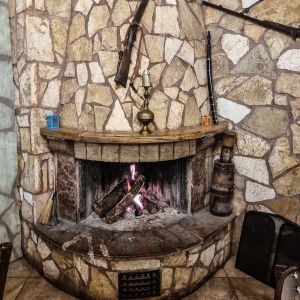
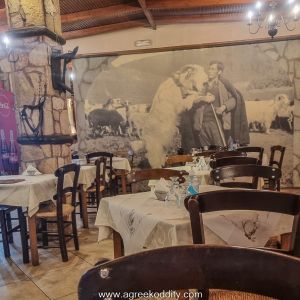
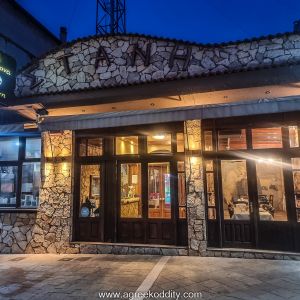
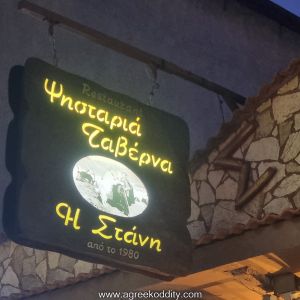



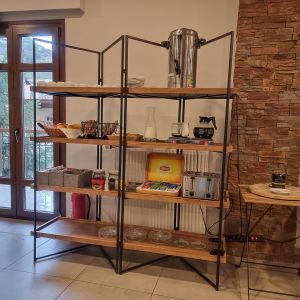
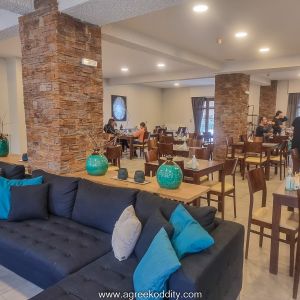
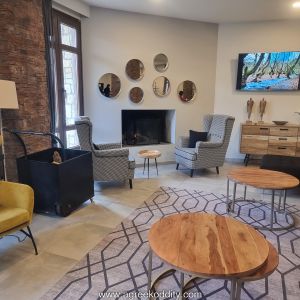

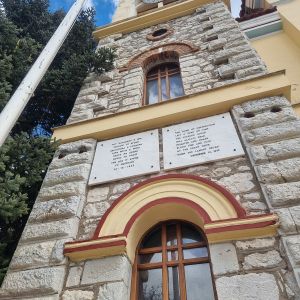
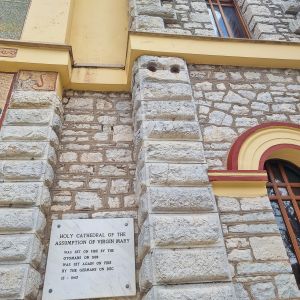
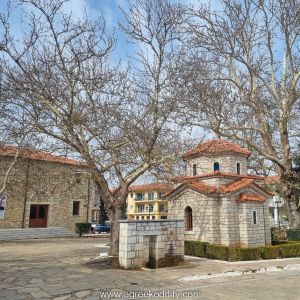



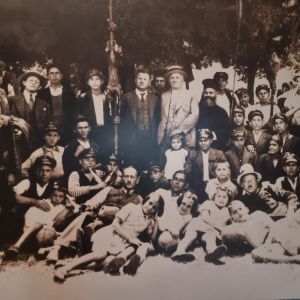

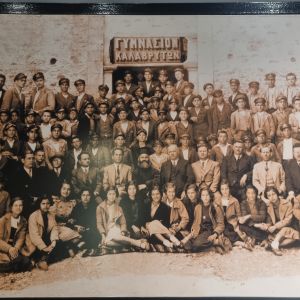
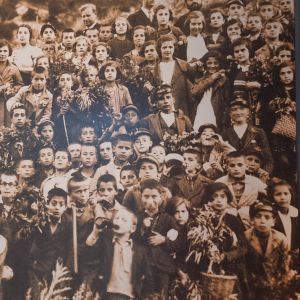

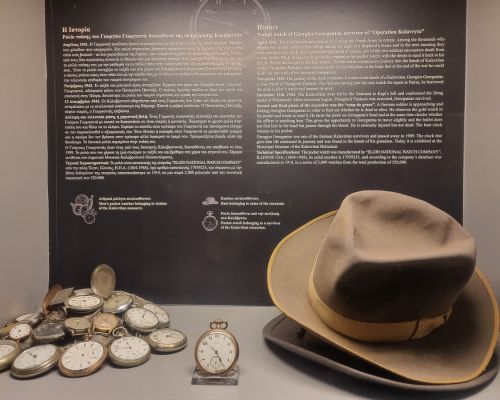
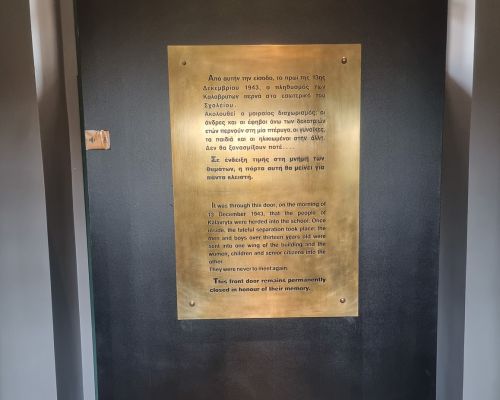
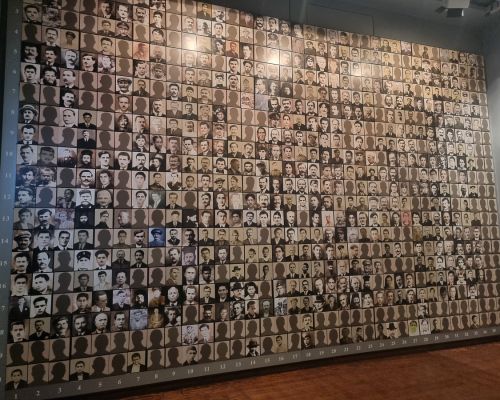






Thankyou for adding all the tragic information, it must have been heart wrenching to be there, I only knew a little about what went on there.
But on a positive note, glad you’re seeing such places I will probably never get to.
As always, it’s my pleasure Carol. Never say never – I really hope you get to experience the Peloponnese as it’s so different to the islands. I think you will fall in love with it.x
Definitely a place I want to visit, and such a moving description. Such a contrast to the holidays I’m used to.
It’s very different. At one point I forgot that I was in Greece!